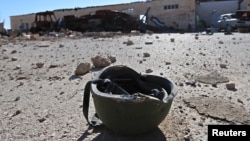A U.S. defense official says there has been a decrease in the number of Islamic State fighters in Iraq and Syria, while numbers of IS militants in Libya have increased.
The U.S. now estimates there are between 19,000 and 25,000 IS militants in Iraq and Syria, the official told VOA Tuesday, slightly lower that previous estimates of 20,000-31,500 fighters in the area. The numbers, however, do suggest that the Islamic State has been able to replenish its ranks, despite the heavy losses.
Defense officials say airstrikes have decreased the terror group’s strength and hindered its movement capabilities. Thousands have been killed by the bombings and hundreds more have died from fighting on the ground.
At the White House, Press Secretary Josh Earnest said the drop in the number of IS fighters in Iraq and Syria is a testament to opposition fighters and aggressive U.S.-led coalition action.
In Libya, a defense official confirmed the number of Islamic State fighters has risen to about 5,000, as VOA has previously reported . Earlier U.S. estimates had put the number at between 2,000 and 3,000.
Earnest said the U.S. is aware IS wants to exploit weaknesses in Libya and well as Afghanistan.
Admiral Michael Franken, U.S. Africa Command's Deputy for Military Operations, warned VOA in December that Sirte, Libya, had become the "divided nucleus" to Raqqa, Syria, the so-called caliphate's headquarters.
VOA National Security correspondent Jeff Seldin and White House correspondent Mary Alice Salinas contributed to this report










